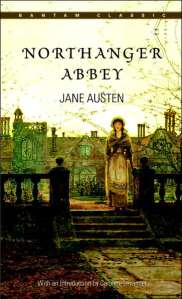The first, Adam Cohen’s compelling “Imbeciles,” focuses on Buck v. Bell, the 1927 case in which the Supreme Court upheld Virginia’s right to sterilize citizens it deemed mentally ill, somehow deficient or, indeed, shiftless. In the second book, “Illiberal Reformers,” Thomas C. Leonard also treats the horrifying rise of compulsory sterilization and, in a deft analysis, goes on to compare the thinking behind eugenics to other forms of supposedly enlightened policy.
Nowadays eugenics is portrayed as an unfortunate detail in the story of an otherwise glowing movement, Progressivism. What these two volumes, especially “Illiberal Reformers,” reveal is that eugenics served as a key tool of the Progressive policy makers of the 1920s. “Darwin’s ambiguity on the question of whether evolution resulted in progress or merely change left enough leeway for progressives to claim society must take charge of its own evolution,” Mr. Leonard notes. The consequences of Progressive Darwinism were policies as imprecise, superstitious and inhumane as any they superseded.
The perversity commenced in the asylums, to which state officials packed off the infirm, the old, repeat criminals and anyone whom they judged somehow physically or mentally challenged. So great was the faith of state officials in their own diagnoses that the officials assumed even radical measures, such as forced sterilization, to be justified. Tens of thousands of inmates were duly sterilized, and state officials, far from hiding their work, trumpeted the news, so loud that they got the attention of Europeans, especially the Germans.
U.S. courts upheld the states’ sterilization policies, concluding that the states’ power indeed ranged broadly enough “to cover cutting the fallopian tubes.” As Mr. Cohen reminds us, a Supreme Court bench that included Louis Brandeis, William Howard Taft and Oliver Wendell Holmes found constitutional the sterilization of Carrie Buck, the supposedly feeble-minded daughter in a mother-daughter pair who had both spent time as inmates of Virginia’s State Colony for Epileptics and Feebleminded. In her teenage years Carrie had been raped; the baby that resulted was now in foster care. Authorities ordered the procedure to prevent further children. Commented Justice Holmes, writing for the majority: “Three generations of imbeciles are enough.”
The perversity commenced in the asylums, to which state officials packed off the infirm, the old, repeat criminals and anyone whom they judged somehow physically or mentally challenged. So great was the faith of state officials in their own diagnoses that the officials assumed even radical measures, such as forced sterilization, to be justified. Tens of thousands of inmates were duly sterilized, and state officials, far from hiding their work, trumpeted the news, so loud that they got the attention of Europeans, especially the Germans.
U.S. courts upheld the states’ sterilization policies, concluding that the states’ power indeed ranged broadly enough “to cover cutting the fallopian tubes.” As Mr. Cohen reminds us, a Supreme Court bench that included Louis Brandeis, William Howard Taft and Oliver Wendell Holmes found constitutional the sterilization of Carrie Buck, the supposedly feeble-minded daughter in a mother-daughter pair who had both spent time as inmates of Virginia’s State Colony for Epileptics and Feebleminded. In her teenage years Carrie had been raped; the baby that resulted was now in foster care. Authorities ordered the procedure to prevent further children. Commented Justice Holmes, writing for the majority: “Three generations of imbeciles are enough.”
The problem is that Holmes was wrong: Carrie Buck was not an imbecile, nor was her daughter. (Perhaps Justice Oliver Wendell Holmes was the imbecile?):
Shlaes goes on to comment that this Progressive Social Darwinism in the United States directly influenced the eugenics programs in Nazi Germany, the Third Reich’s Law for the Prevention of Hereditarily Diseased Offspring being based on a proposal from the Eugenics Record Office in Cold Springs Harbor, New York. Once the Nazis started carrying out the full logic of eugenics--not just preventing "defective" babies from being born, or "letting" them die without care, but eliminating (killing) them after, even long after, birth--the U.S. eugenics movement faded.
Shlaes highlights Thomas C. Leonard's placement of blame for eugenics policies, which affected charity programs, union contracts, immigration quotas, and other economic management efforts:
These two books, and Ms. Shlaes's excellent review are salutary warnings to anyone who wants "to play god" (sic) with individual's lives for the sake of what they consider the good of society or the life worth living. I was shocked to learn many years ago that Helen Keller was in favor of eugenics and even thought that hospitals should have "physician juries" to decide whether babies born with birth defects would receive treatment or not. She said, “Our puny sentimentalism has caused us to forget that a human life is sacred only when it may be of some use to itself and to the world.” I have never been able to watch The Miracle Worker with the same wonder and delight since.





























